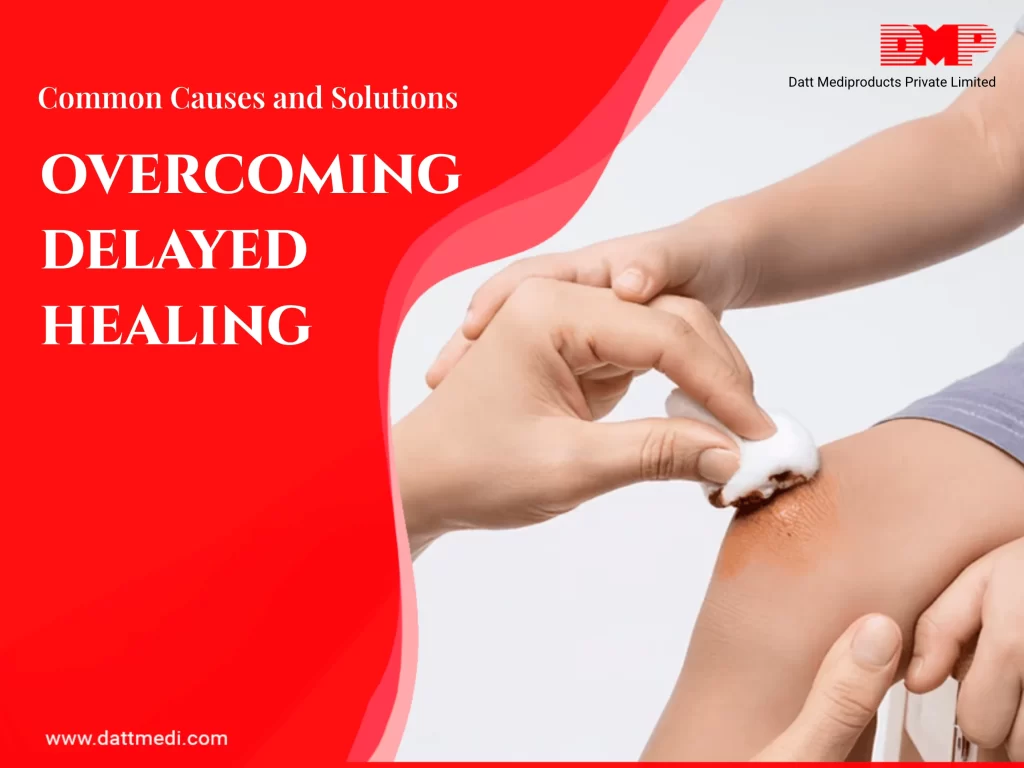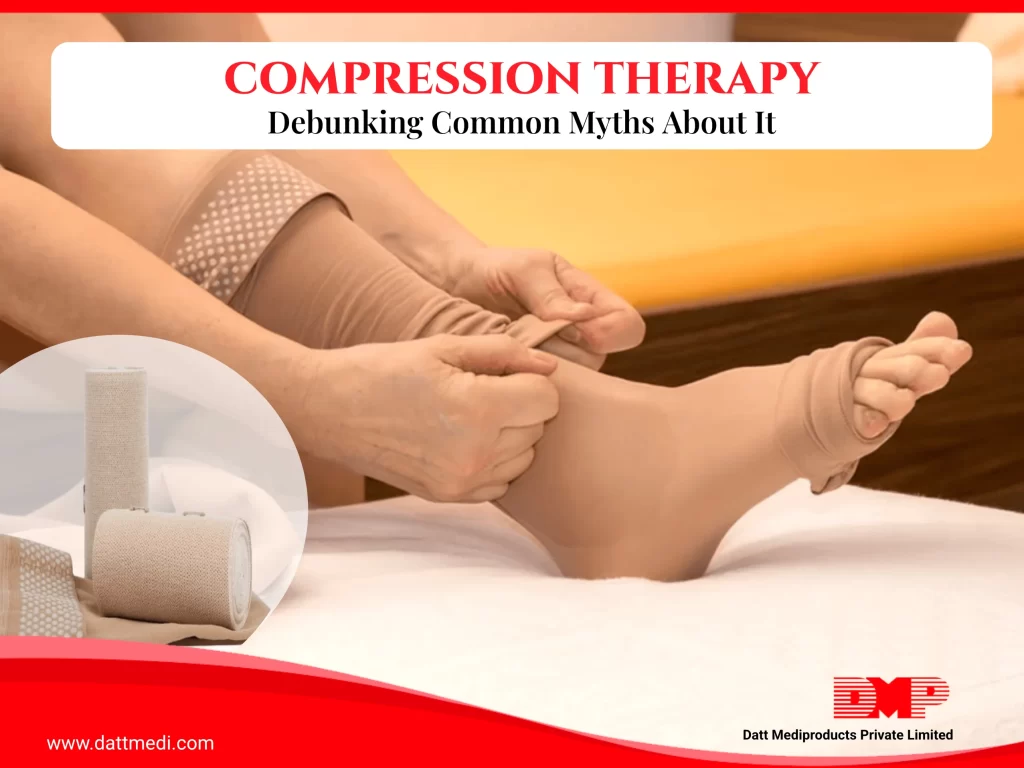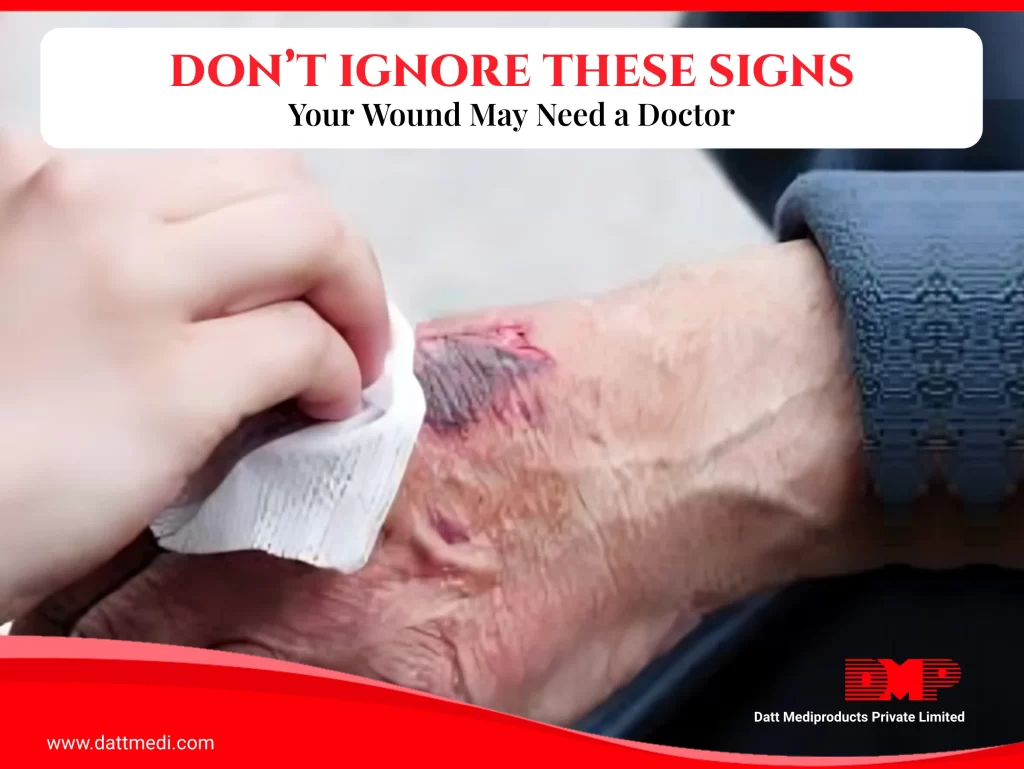Discover Informative Blogs on Healthcare Solutions
Search by Blog
Read by Category
Patient Care Solutions
Health & Wellness
Environmental Health
First Aid & Emergency Care
Advance Wound Care
Wound Care
Your healing journey continues beyond this blog
Find the right products for better recovery at online store


Extreme weather conditions, whether hot or cold, can significantly affect skin integrity, potentially compromising the body’s natural healing process.
Maintaining healthy skin is vital not only for general well-being but also for promoting effective wound healing. In this blog, we’ll explore how extreme temperatures impact skin health and share tips to protect your skin and wounds year-round.
Challenges in Hot Weather
1. Heat and Humidity
Hot temperatures combined with high humidity levels increase perspiration, which can lead to moisture-related skin breakdown. The skin may become macerated, making it more vulnerable to irritation and infection, especially in sensitive areas like underarms and groin.
2. Sun Exposure
Excessive UV radiation from sun exposure can damage the skin, leading to sunburn, heat rashes, and increased risk of further skin issues. Sunburned skin is more prone to infection, which can delay the healing of existing wounds.
3. Dehydration Risks
Hot weather can cause dehydration, which impacts skin hydration and weakens the skin’s barrier function. When skin becomes dry and cracked, it loses its ability to protect against pathogens, affecting both general skin health and wound healing.
Challenges in Cold Weather
- Dry Air – Cold air often lacks moisture, leading to dehydration of the skin, making it dry and prone to cracks or fissures. These cracks provide an entry point for bacteria, which can cause infections and delay healing.
- Reduced Blood Flow – In colder temperatures, blood circulation to the skin decreases, which can hinder the delivery of essential nutrients and oxygen to skin cells, slowing down the skin’s natural repair processes and impeding wound healing.
- Layered Clothing – While layering clothing can help retain warmth in cold weather, it may also cause friction, especially in sensitive or healing areas. This friction can irritate the skin and make it more susceptible to damage.
Tips for Maintaining Skin Integrity in Hot Weather
Stay Hydrated
Hydration is key for healthy skin. Drink plenty of water throughout the day to keep your skin moist from the inside out and to support overall skin health.
Protective Clothing
Wear lightweight, breathable fabrics to allow airflow and reduce sweating. UV-protective clothing can also help shield your skin from harmful sun exposure.
Skin Cleansing and Moisturization
To avoid sweat buildup, ensure regular skin cleansing, followed by the application of a lightweight, non-comedogenic moisturizer. This will help lock in hydration without clogging pores.
Tips for Maintaining Skin Integrity in Cold Weather
- Hydrating Moisturizers – Cold air can strip the skin of moisture. Use thicker, oil-based moisturizers to prevent water loss and keep the skin barrier intact.
- Humidify Indoor Air – Consider using humidifiers indoors to add moisture to the air and prevent skin dehydration caused by dry environments.
- Gentle Skin Care Routine – Avoid using hot water when washing your face or body, as this can further dry out the skin. Opt for mild, fragrance-free cleansers that won’t irritate the skin or damage its natural protective layer.
Special Considerations for Wound Care
i) Temperature Regulation
Maintaining a moderate temperature for wound healing is essential. Extreme heat can worsen inflammation and slow down healing, while cold can cause a reduction in circulation. Aim for a comfortable, consistent environment to support optimal recovery.
ii) Dressing Types
For hot weather, choose dressings that can absorb excess moisture and prevent maceration. For cold weather, opt for dressings that retain moisture to keep the wound hydrated and prevent cracking or dryness.
Regular Inspection
In extreme weather conditions, skin changes can happen quickly. It’s important to inspect your skin and any wounds frequently to monitor for signs of irritation, infection, or other complications.
As the seasons change, so should your skincare routine. Understanding how hot and cold temperatures affect skin integrity is key to protecting your skin and supporting proper wound healing.
By making small adjustments to your daily habits, you can ensure that your skin remains healthy and wounds heal effectively, no matter the weather.
Stay vigilant and adjust your routine as needed to safeguard your skin and enhance your healing process throughout the year.

Healing is a natural process—but sometimes, wounds don’t heal as quickly as expected. Delayed healing can impact physical comfort, increase the risk of infection, and reduce quality of life.
The good news…
Many common causes of delayed healing can be managed with simple lifestyle adjustments. Let’s explore these causes and discover actionable tips for improving the healing process.
Understanding Delayed Healing
Wound healing is influenced by various factors—some within our control, others that may require professional intervention. Identifying these causes is the first step toward a faster, more efficient recovery.
Common Causes of Delayed Healing
- Poor Nutrition: Lack of essential nutrients, such as proteins, amino acids, fatty acids, carbohydrates, vitamins (A, C & E) and micronutrients (magnesium and zinc) to name a few, slows tissue repair by affecting one or more phases of the wound healing process.
- Inadequate Hydration: Dehydration impairs skin regeneration.
- Underlying Health Conditions: Conditions like diabetes, diabetes associated neuropathy, vascular diseases, or immune disorders can complicate healing.
- Smoking or Alcohol Consumption: These enhance host susceptibility to infections that lead to impaired angiogenesis thereby reducing blood flow and oxygen delivery to tissues which are essential for wound healing.
- Stress and Poor Sleep: Disrupt hormone balance and deregulate the immune system, which directly affects recovery. Additionally, stressed individuals are more likely to develop unhealthy habits such as inadequate nutrition, smoking, less exercise, poor sleep patterns; negatively modulating the healing mechanism.
- Infection or Repeated Trauma to the Wound: Can significantly hinder the healing process. Microorganisms obtain easy access to the underlying tissues when skin is injured. The presence of replicating microorganisms in the wound elongates the inflammatory phase of the wound healing process. This can lead to the wound to enter into a chronic state with significant delay in wound healing.
Nutrition & Hydration Matter
Proper nutrition is essential for healing.
Incorporate the following into your diet:
- Lean proteins (eggs, fish, legumes) for tissue repair
- Fresh fruits and vegetables for vitamins and antioxidants
- Whole grains to support energy levels and tissue growth
Tip: Staying well-hydrated ensures nutrients are transported to your cells, promoting faster healing and flushing out toxins.
Sleep & Stress Management
Proper rest accelerates healing. Focus on these habits:
- Aim for 7–9 hours of sleep each night.
- Practice mindfulness or relaxation techniques to reduce stress.
- Limit screen time and caffeine before bed to enhance sleep quality.
Did You Know? Chronic stress raises cortisol levels, slowing wound recovery.
Daily Movement & Gentle Activity
Physical activity promotes circulation, which helps deliver oxygen and nutrients to healing tissues:
- Engage in light activities, like short walks, if possible.
- Avoid putting pressure on the wound site, and take care to avoid friction.
- Elevate limbs to reduce swelling.
Important: Always follow your healthcare provider’s advice regarding movement and wound care.
Basic Wound Hygiene
Maintaining wound hygiene is crucial:
- Keep the wound clean and protected with proper dressings.
- Change dressings regularly, as advised by your healthcare provider.
- Avoid touching or scratching the wound area.
Pro Tip: Wash your hands thoroughly before and after touching a wound to reduce infection risk.
When to Seek Help
If your wound isn’t healing as expected or you get fever or flu-like symptoms or the wound shows signs of infection (such as increased redness, heat, swelling, pus, or a foul odor), seek professional medical guidance. Conditions like diabetes or circulatory issues may require specialized wound care.
Take Small Steps Toward Better Healing
Every small change—from better hydration to taking a short walk—adds up. By staying informed and committed to your healing process, you give your body the best chance to recover naturally.
Empowering You with the Right Solutions
At Datt Mediproducts, we understand the importance of optimal healing. While we don’t provide medical treatment, our advanced wound care solutions are designed to support your recovery by offering comfort, protection, and care where it matters most.

Compression therapy is a widely used treatment method that helps improve circulation, reduce swelling & pain, and support faster healing. However, many people hesitate to use it due to common misconceptions. Let’s clear up these myths and highlight the true benefits of compression therapy.
What Is Compression Therapy?
Compression therapy involves wearing specially designed garments, such as stockings, wraps or bandages, that apply gentle pressure to the legs or other affected areas. This pressure promotes blood flow, prevents fluid buildup, and supports overall vascular health. It is commonly used for conditions arising due to chronic venous insufficiency such as varicose veins, venous varicosities/ leg ulcers, lymphedema or in cases of deep vein thrombosis (DVT) and post surgery recovery
Myth 1: Compression Therapy Is Only for the Elderly
Fact: While older adults commonly use compression therapy to manage venous disorders, it benefits people of all ages. Athletes use compression garments for muscle recovery, travelers wear them to prevent blood clots, and individuals with jobs requiring prolonged standing or sitting rely on them to reduce leg fatigue.
Myth 2: Compression Therapy Causes Discomfort
Fact: Properly fitted compression garments should feel snug but not painful. Modern compression products are designed for comfort, with breathable materials and graduated pressure to provide support without restricting movement. If discomfort occurs, it often means the compression level or size is incorrect.
Myth 3: Compression Therapy Is Only for Post-Surgery Recovery
Fact: While it is beneficial post-surgery to reduce swelling and promote faster healing, compression therapy is also widely used for the management of chronic conditions like varicose veins, lymphedema, and even general leg fatigue. It can also be used as a preventive measure for individuals at risk of circulation problems. It can prevent leg swelling in people with sedentary lifestyles or situations like long flights; prevention of venous thromboembolism in immobile patients, and recurrence of venous leg ulcers in older adults.
Myth 4: Compression Therapy Will Make Your Legs Look Bulky
Fact: Compression garments have evolved significantly. Modern designs are sleek, lightweight, and available in different styles and colors, making them easy to wear under clothing without appearing bulky.
Myth 5: Compression Therapy Can Lead to Blood Clots
Fact: When used correctly, compression therapy actually helps prevent blood clots by promoting healthy circulation. Medical professionals often recommend it for people at risk of DVT, especially during long flights or post-surgery recovery.
Myth 6: Compression Therapy Is Only for People With Varicose Veins
Fact: While varicose veins are a common reason for using compression therapy, it is also beneficial for individuals with chronic venous insufficiency, lymphedema, post-exercise recovery, chronic pain, poor circulation, athletes and even pregnancy-related swelling.
Myth 7: Compression Therapy Is a Short-Term Solution
Fact: Compression therapy can be used for both short-term and long-term management of symptoms & to prevent further complications depending on the condition. Many individuals with chronic venous conditions or circulation issues incorporate it into their daily routines for continuous benefits.
The Truth About Compression Therapy
Compression therapy is a versatile and effective treatment that goes beyond age or specific medical conditions. By dispelling these myths, we can appreciate how compression bandages and garments enhance circulation, reduce swelling, and promote healing across all age groups and lifestyles.
Looking for reliable compression solutions?
Explore our range of high-quality compression solutions for effective support, enhanced comfort, and improved circulation in daily life.

Keeping wounds clean and dry is essential for proper healing. However, many people worry about showering or bathing with an open wound and the potential risks of exposing wounds to water. Without proper precautions, water exposure can lead to complications like infections, delayed healing, or dressing displacement.
Risks of Bathing with an Open Wound
- Infection Risks: Water, especially non-sterile water, can introduce bacteria into the wound, increasing the risk of infection.
- Delayed Healing: Excessive moisture can disrupt the wound environment, causing the skin to swell, affecting moisture balance and slowing the healing process.
- Dressing Displacement: Bathing may cause bandages or dressings to loosen or fall off, exposing the wound to contaminants.
Do’s for Wound Care When Bathing
- Use Waterproof Dressings: Protect your wound from water exposure by using waterproof dressings, which help prevent infection and promote proper healing.
- Cover the Wound: If waterproof dressings aren’t available, use plastic wrap or a waterproof barrier to keep the wound dry.
- Opt for Showers Over Baths: Showers reduce the risk of soaking wounds, as water flows off the body rather than submerging the wound.
Don’ts for Wound Care When Bathing
- Avoid Soaking: Stay away from tubs, pools, or hot tubs, as they introduce bacteria and disrupt the wound environment.
- Don’t Rub the Wound Area: Avoid scrubbing or applying soap directly on the wound to prevent irritation or removal of protective layers.
- Avoid High-Pressure Water: Strong water pressure can disturb scabs, disrupt dressings, or cause discomfort.
Waterproof Dressing Options
1. Adhesive Films:
Velfix® – T Film: Provides a waterproof, breathable seal to protect wounds from water exposure.
2. Foam Dressings with Borders:
Velfix® – Edge: Features an adhesive border that creates a secure seal, preventing water from entering.
3. Silicone-Based Dressings:
Velfix® – Secure (PICC): Designed for long-term wound protection with a waterproof and skin-friendly seal.
4. Adhesive Tapes:
Velpore™ – T: A strong yet gentle adhesive tape that secures dressings in place, ensuring they remain effective during showers.
Steps for Showering with a Wound
- Prepare the Wound: Clean and dress the wound before showering to ensure protection.
- Use Lukewarm Water: Avoid hot or high-pressure water that could irritate the wound.
- Pat Dry Carefully: After showering, gently pat the dressing dry with a soft, clean towel.
Signs to Watch For
If you notice redness, swelling, unusual discharge, persistent discomfort, warmth around the wound, or a foul odor, contact a healthcare provider immediately. These may indicate an infection or irritation that requires medical attention.
With the right precautions and waterproof dressings, showering with a wound can be safe and manageable. Choosing high-quality products helps protect wounds and support optimal healing. Always follow your healthcare provider’s guidance for the best wound care practices.

Wounds are a common part of life, whether from minor cuts, surgical procedures, or injuries. While most heal on their own with proper care, some wounds can develop complications that require medical attention.
Ignoring early warning signs can lead to infections or even severe health risks. Knowing when to seek medical help can make all the difference in ensuring a safe and speedy recovery.
Here are five key signs that indicate your wound might need professional care:
1. Increased Redness Around the Wound
A slight redness around a wound is normal, especially in the first few days. However, if you notice the redness spreading outward or deepening in color, it could be a sign of infection. This may indicate your immune system is fighting off bacteria, and medical treatment might be necessary.
When to worry: If the redness continues to expand or is accompanied by pain, swelling, or warmth, it’s time to consult a doctor.
2. Swelling or Warmth Around the Wound
Swelling is a natural response to injury; involving increased blood flow, the body’s immune response acting as a buffer to protect the injured area. But swelling should be continually decreasing, excessive swelling or warmth around the wound could mean trouble. These signs often indicate that your body is responding to an infection.
What to look for: If the wound becomes significantly puffy, feels hot to the touch, or the swelling doesn’t subside within a few days, it’s best to seek medical advice.
3. Pus or Unusual Discharge
One of the clearest signs of infection is pus — a thick, yellow, green, or foul-smelling fluid coming from the wound. A properly healing wound should not have significant discharge beyond a small amount of clear fluid.
Act quickly if: You notice pus, a bad odor, or an increase in drainage, as these are strong indicators of bacterial infection requiring immediate attention.
4. Increased Pain or Tenderness
Pain is expected after an injury, but it should gradually decrease over time. If your wound becomes more painful instead of improving, it may indicate an underlying issue like infection or delayed healing.
Red flag: If touching the wound becomes increasingly painful, or if discomfort spreads beyond the injury site, a doctor should assess the situation.
5. Fever or Chills
While mild fever (below 100°F/ 38°C) can be a part of the healing process, high fever or persistent fever may indicate a more serious issue. High grade fever can be the body trying to fight harmful bacteria, viruses or fungi that have invaded the wound. This requires immediate care as it can get worse very easily.
Seek urgent care if: You experience a fever over 100.4°F (38°C) or chills along with any of the other symptoms listed above.
Importance of Clean and Safe Wound Dressings
Using the right wound care products can significantly reduce the risk of infection and promote faster healing. Proper wound dressings help create a protective barrier, control moisture levels, and keep the wound environment clean.
- Antimicrobial dressings help prevent bacterial growth and maintain a sterile healing environment.
- Waterproof dressings protect against external contaminants while ensuring proper moisture balance.
- Gentle adhesive tapes secure dressings in place without causing skin irritation, making them suitable for daily use.
When to Seek Medical Help
If you notice any of the above warning signs, don’t wait. Seeking medical attention early can prevent more serious complications and help ensure a smooth recovery.
Call your doctor if:
- Your wound isn’t healing or worsens after a few days.
- You notice spreading redness, pus, increased pain, or fever.
- You have underlying health conditions (like diabetes) that may slow healing.
Your body is designed to heal, but sometimes wounds need extra care. By paying attention to these warning signs and using the right wound care products, you can prevent infections and support faster healing.
Taking action early can mean the difference between a quick recovery and serious complications. Stay safe, stay informed, and give your wound the care it deserves!

Chronic wounds are wounds that fail to heal within the expected time frame, typically lasting more than four weeks. They can arise due to underlying conditions such as diabetes, prolonged pressure, or venous insufficiency. Common types include diabetic ulcers, bed sores, and venous leg ulcers.
Managing chronic wounds presents significant challenges, including a high risk of infection, slow healing, and patient discomfort. The right dressing plays a crucial role in creating an optimal healing environment, reducing complications, and improving patient outcomes.
Types of Chronic Wounds and Their Dressing Needs
Diabetic Ulcers
- A Diabetic foot ulcer is a debilitating complication of diabetes mellitus. It refers to an open sore or wound, commonly developing on the feet of people with diabetes.
- Require moisture balance, infection control, and non-adhesive properties to protect fragile skin.
Bed Sores
- Bed sores are ulcers which usually develop gradually on the skin and the tissue underneath. Occurring mostly in bed ridden patients, bed sores arise on the skin covering bony areas of the body such as hips, back, tailbone, etc.
- Demand dressings that redistribute pressure and effectively manage exudate to prevent further skin breakdown.
Venous Leg Ulcers
- Venous leg ulcers are chronic wounds affecting mostly older adults. They primarily result from prolonged venous insufficiency, which leads to tissue breakdown in lower extremities.
- Benefit from a combination of compression therapy and absorbent dressings to address venous insufficiency and excessive fluid.
Infected Chronic Wounds
- Chronic infected wounds are those wounds that do not even start to heal after 4 to 12 weeks despite treatment. They develop due to poor blood circulation, weak immune system or co-morbid conditions such as diabetes.
- Require antimicrobial dressings to manage bacterial load and prevent further complications.
Key Dressing Options:
VEL NeXT™
- Designed specifically for chronic wounds, including diabetic ulcers, burns, necrotizing fasciitis, and venous ulcers.
- Promotes faster wound healing while maintaining an optimal moisture balance.
Velvert®
- A secure antimicrobial dressing with excellent moisture management.
- Ideal for wounds at high risk of infection, including diabetic ulcers and chronic wounds.
Silvel™
- Features nano-crystalline silver for strong antimicrobial action.
- Features silver for strong antimicrobial action.
- Suitable for infected or high-risk wounds, particularly bed sores.
Velsap™
- Designed for moderate to heavily exuding wounds.
- Provides effective fluid management, reducing the need for frequent dressing changes.
How to Choose the Right Dressing?
Selecting the right dressing requires a comprehensive assessment of several factors:
- Wound Type: Identify whether the wound is a diabetic ulcer, pressure sore, or venous ulcer.
- Exudate Levels: Choose absorbent dressings for heavily exuding wounds and moisture-retaining options for dry wounds.
- Infection Status: Use antimicrobial dressings for infected or high-risk wounds.
- Patient-Specific Considerations: Factors such as mobility, skin sensitivity, and underlying health conditions must be considered.
Healthcare professionals play a crucial role in guiding dressing selection based on individual wound characteristics and patient needs.
Additional Tips for Chronic Wound Care Management
- Proper Cleaning & Debridement: Keeping the wound clean and removing dead tissue enhances healing.
- Regular Monitoring & Dressing Changes: Assessing the wound regularly and changing dressings at the right intervals prevent complications and ensure steady healing.
Chronic wounds require tailored solutions to support healing and prevent complications. Choosing the right dressing—ensures optimal wound care and faster recovery.
Explore our advanced dressing solutions today and find the best option for your wound care needs!
